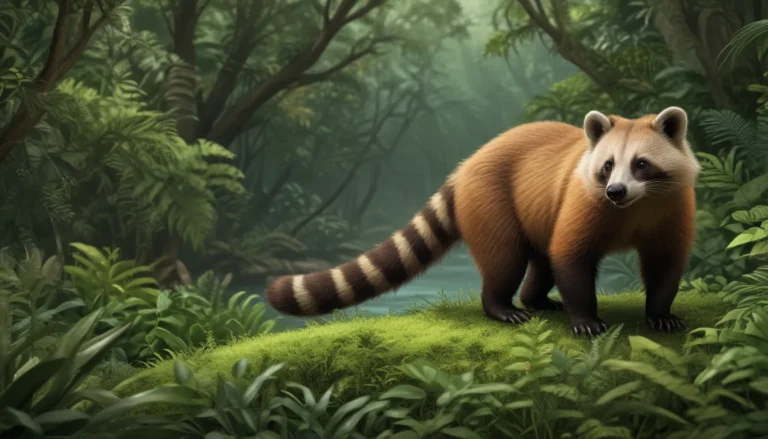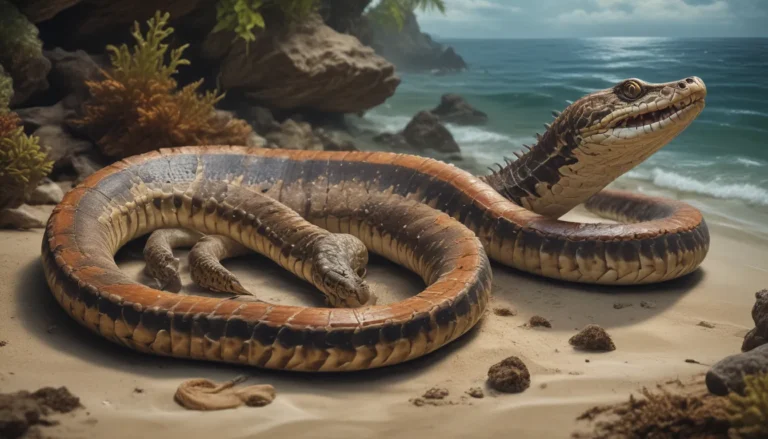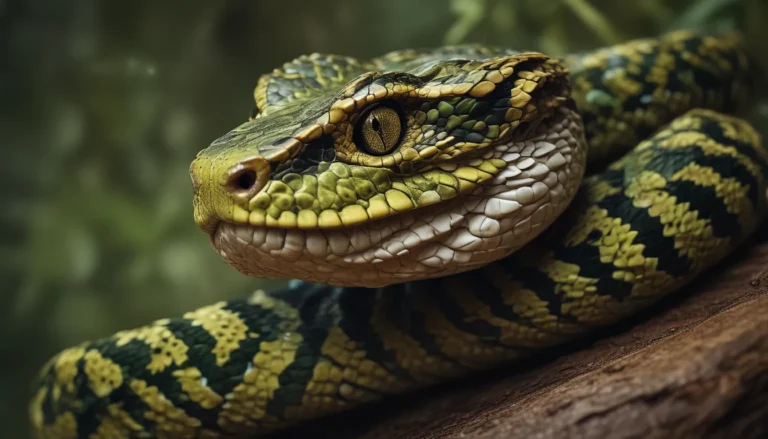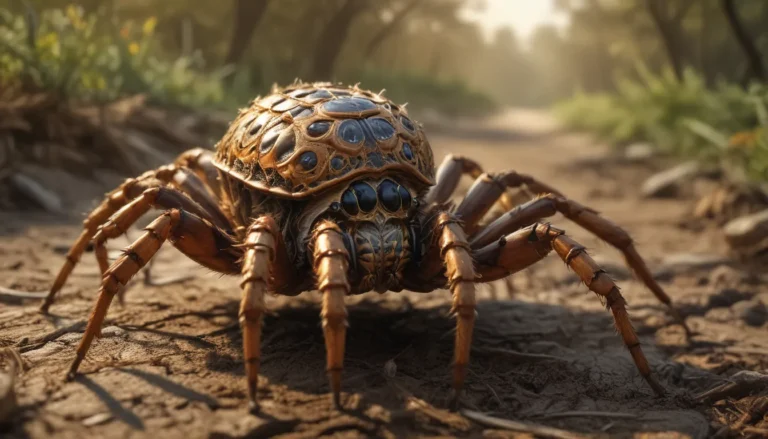The pictures we use in our articles might not show exactly what the words say. We choose these pictures to make you interested in reading more. The pictures work together with the words but don’t take their place. The words still tell you the important facts.
Welcome to the enchanting world of the Arabesque Orbweaver, a captivating spider that boasts mesmerizing markings and impressive hunting skills. In this article, we will delve into 13 unbelievable facts about this extraordinary arachnid, shedding light on its appearance, behavior, and remarkable adaptations. Join us on a fascinating journey into the realm of the Arabesque Orbweaver as we uncover the intriguing secrets it holds.
Unveiling the Beauty of the Arabesque Orbweaver
The Arabesque Orbweaver, scientifically known as Neoscona arabesca, is a striking spider that showcases intricate and mesmerizing markings on its abdomen. Resembling swirling arabesque designs, these unique patterns give the spider its distinctive appearance, making it a true marvel of nature.
Embracing the Orb-Weaver Family
Belonging to the orb-weaver family, the Arabesque Orbweaver is renowned for its skill in building intricate circular webs. Commonly found in North America, particularly in wooded areas, these spiders expertly construct their webs between trees or vegetation to capture prey and sustain their livelihood.
The Tale of the Female and Male Arabesque Orbweaver
In the world of the Arabesque Orbweaver, the female takes the spotlight as the larger counterpart, measuring up to 0.6 inches in body length, while the male typically reaches around 0.4 inches. This size difference, a common trait in spiders, is believed to be linked to reproductive behaviors within the species.
Hunting Prowess of the Arabesque Orbweaver
Arabesque Orbweavers are adept hunters, relying on their meticulously constructed orb webs to ensnare prey. Feeding primarily on small insects like mosquitoes, flies, and moths that become trapped in their sticky webs, these spiders swiftly immobilize their catch with venom before proceeding to feed.
The Spectacle of Eight Eyes
With eight eyes arranged in two rows of four, the Arabesque Orbweaver possesses a wide field of vision, enhancing its ability to detect potential threats and prey. Although their vision is not as sharp as that of humans, these spiders rely on vibrations and touch to navigate their surroundings effectively.
Embracing the Art of Molting
Like all spiders, Arabesque Orbweavers undergo molting to facilitate growth and development. Shedding their exoskeleton enables these spiders to accommodate larger bodies, repair damaged body parts, and continue their journey of growth throughout their lifespan.
Illuminating Nocturnal Creatures
As predominantly nocturnal beings, Arabesque Orbweavers are most active during the night, engaging in web spinning, prey hunting, and maintenance tasks. In the daytime, these spiders retreat to well-camouflaged hideouts like leaf litter and crevices to evade predators and conserve energy.
A Gentle Stance Towards Humans
Contrary to their intimidating appearance, Arabesque Orbweavers are typically non-aggressive towards humans. When confronted, they often choose to flee or remain motionless rather than engage in confrontations. To maintain harmony with these spiders, it is advisable to avoid disrupting their webs and approaching too closely.
Guardians of the Ecosystem
Arabesque Orbweavers, like other spider species, play a vital role in controlling insect populations. By preying on insects, they contribute to ecosystem balance and help mitigate pest-related issues that pose threats to crops and human health.
Witnessing the Passage of Time
Unlike many of their counterparts with shorter lifespans, Arabesque Orbweavers can live for several years under favorable conditions. Some individuals have been documented to survive up to three years, showcasing their resilience and adaptability to varying environmental factors.
The Dance of Sexual Cannibalism
In a captivating yet morbid dance of nature, the female Arabesque Orbweaver may partake in sexual cannibalism during mating, consuming the male for additional nutrients and ensuring successful reproduction. This behavior serves as a strategy for the female to enhance her reproductive success and secure the passing on of the male's genetic legacy.
Marveling at the Strength of Spider Silk
The silk produced by Arabesque Orbweavers is renowned for its exceptional strength, surpassing that of steel of the same thickness. This remarkable silk serves multiple purposes, from web construction to prey wrapping and the creation of protective egg sacs, showcasing the incredible versatility and durability of spider silk.
The Gift of Regeneration
Should an Arabesque Orbweaver lose a limb in an encounter with a predator or an accident, it possesses the remarkable ability to regrow the missing appendage through a process known as autotomy. This regenerative capability allows the spider to replace lost limbs and continue its journey of survival and adaptation.
Conclusion: Embracing the Enchantment of the Arabesque Orbweaver
The Arabesque Orbweaver stands as a testament to the wonders of nature, with its intricate patterns, impressive adaptations, and essential role in ecosystem dynamics. By exploring the world of this remarkable spider, we gain a deeper appreciation for biodiversity and the interconnectedness of all species in our natural environment. Let us celebrate the beauty and resilience of the Arabesque Orbweaver as we continue to unravel the mysteries of our natural world.
Frequently Asked Questions (FAQs)
-
Are Arabesque Orbweavers venomous?
Yes, Arabesque Orbweavers possess venom, although it is not considered harmful to humans. In some cases, their bite may cause mild itching or a minor allergic reaction. -
What is the diet of Arabesque Orbweavers?
Arabesque Orbweavers primarily feed on small insects such as flies, mosquitoes, beetles, and other spiders. They use their silk to immobilize and consume their prey. -
Where can Arabesque Orbweavers be found?
Arabesque Orbweavers are commonly found in North America, particularly in the eastern and central regions. They prefer habitats like gardens, fields, forests, and areas near water sources. -
What is the average lifespan of Arabesque Orbweavers?
The lifespan of Arabesque Orbweavers ranges around one year, varying based on environmental factors and prey availability. -
Do Arabesque Orbweavers have natural predators?
Yes, Arabesque Orbweavers face predation from birds, lizards, and certain larger spider species. They have developed adaptations like camouflage and swift movements to evade potential predators.
In the enchanting world of the Arabesque Orbweaver, mysteries unfold, and wonders abound. Explore the realm of this captivating spider and immerse yourself in the beauty of nature's intricate creations. As we delve deeper into the secrets of the Arabesque Orbweaver, we gain a profound understanding of the diverse and interconnected tapestry of life that surrounds us. Join us in celebrating the marvels of the natural world and embracing the enigmatic allure of the Arabesque Orbweaver.






